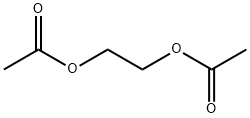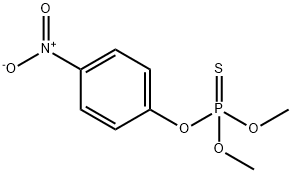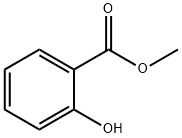2-Methyl-2,4-pentanediol
Synonym(s):Hexylene glycol;MPD;2-Methyl-2,4-pentanediol;Diphosphomevalonate decarboxylase;Mevalonate (diphospho)decarboxylase
- CAS NO.:107-41-5
- Empirical Formula: C6H14O2
- Molecular Weight: 118.17
- MDL number: MFCD00004547
- EINECS: 203-489-0
- SAFETY DATA SHEET (SDS)
- Update Date: 2025-03-07 18:45:43

What is 2-Methyl-2,4-pentanediol?
Description
2-Methyl-2,4-pentanediol, which in the past has been erroneously called “hexylene glycol”, is an ingredient in products ranging from cosmetics to brake fluid. A. Franke first reported its synthesis in 1901. P. Y. Chavant and co-workers recently came up with?a new use for it—synthesizing arylboronic esters without having to run the reaction at cryogenic temperatures.
Description
Hexylene glycol is a colorless liquid with amild, sweet odor. The odor threshold is 50 ppm. Molecularweight= 1 18.20; Specific gravity (H20:1) = 0.92; Boilingpoint = 197.8℃; FreezingMelting point= - 50℃ (sets toglass); Vapor pressure = 0.05 mmHg at 20℃;Flashpoint = 98.3℃; Autoignition temperature = 260℃; 306℃.Explosive limits: LEL= 1.3%; UEL= 7.4%.. HazardIdentification (basedon NFPA-704 M Rating System):Health 2, Flammability 1, Reactivity 0. Soluble in water.
Chemical properties
Hexylene Glycol is an oily colorless liquid with a mild sweet odor. It is an oxygenated solvent derived from acetone which has two alcohol functions. It has a low evaporation rate and it is completely miscible with water.
The Uses of 2-Methyl-2,4-pentanediol
(^+)-2-Methyl-2,4-pentanediol is used to control the flow properties of industrial products such as paints, coatings, cleansers, solvents, and hydraulic fluids. It acts as a thickening agent in cosmetic products. It serves as a coupling agent and an additive to hydraulic fluids, inks and cement. It is also employed as a blood volume expander. Further, it is used as a solvent for cleaning and colorant products. In addition to this, it is used in laboratory studies as a precipitant and cryoprotectant in protein crystallography.
The Uses of 2-Methyl-2,4-pentanediol
- Hexylene Glycol is used as a reagent in the synthesis of functionalized boronic esters. it is used in laboratory studies as a precipitant and cryoprotectant in protein crystallography.
- Also used in the preparation of vinylboronates.
- It is mainly used as a coupling agent and an additive to hydraulic fluids, inks and cement. Further, it is used as a solvent for cleaning and colorant products.
- It is a potential substitute for glycol ethers.
- It is an effective shrinkage reduction admixture or SRA for concrete and mortar.
- It can also be used as a building block in chemical synthesis.
- Hexylene glycol is a key solvent in many markets such as paints & coatings, metal working fluids, detergency, cosmetics & fragrances, textiles & leather.It is used to control the flow properties of industrial products such as paints, coatings, cleansers, solvents, and hydraulic fluids. It acts as a thickening agent in cosmetic products.
- It is also employed as a blood volume expander.
The Uses of 2-Methyl-2,4-pentanediol
hexylene glycol could be considered a solubilizer.
The Uses of 2-Methyl-2,4-pentanediol
Fuel and lubricant additive; solvent in cosmetics; solvent in petroleum refining; coupling agent in hydraulic brake fluid and printing inks; gasoline anti-icer additive
Definition
ChEBI: A glycol in which the two hydroxy groups are at positions 2 and 4 of 2-methylpentane (isopentane).
Production Methods
2-Methyl-2,4-pentanediol is prepared commercially by the catalytic hydrogenation of diacetone alcohol . It is used as a chemical intermediate, a selective solvent in petroleum refining, a component of hydraulic fluids, a solvent for inks, and as an additive for cement . Industrial exposure is likely to be from direct contact or from inhalation, particularly if the material is heated.
General Description
Oily colorless liquid with a mild sweet odor. Floats and mixes slowly with water.
Air & Water Reactions
Hygroscopic. Water soluble [Hawley]
Reactivity Profile
2-Methyl-2,4-pentanediol is incompatible with the following: Strong oxidizers, strong acids [Note: Hygroscopic (i.e., absorbs moisture from the air).] .
Hazard
Toxic by ingestion and inhalation; irritant to skin, eyes, and mucous membranes. Combustible.
Health Hazard
Irritation of eyes, nose and throat; headache, dizziness, and nausea.
Chemical Reactivity
Reactivity with Water No reaction; Reactivity with Common Materials: Can catch fire when in contact with porous materials such as wood, asbestos, cloth, soil, or rusty metals; Stability During Transport: Stable at ordinary temperatures, however when heated this material can decompose to nitrogen and ammonia gases. The decomposition is not generally hazardous unless it occurs in confined spaces; Neutralizing Agents for Acids and Caustics: Flush with water and neutralize the resulting solution with calcium hypochlorite; Polymerization: Not pertinent; Inhibitor of Polymerization: Not pertinent.
Potential Exposure
”Human Data;Primary Irritant. Hexylene glycol is used in metal workingfluids; the formulation of hydraulic brake fluids; in makingprinting inks. It is used as a fuel and lubricant additive; asan emulsifying agent; and as a cement additive.
First aid
If this chemical gets into the eyes, remove anycontact lenses at once and irri gate immediately for at least15 min, occasionally lifting upper and lower lids. Seek med-ical attention immediately. If this chemical contacts theskin, remove contaminated clothing and wash immediatelywith soap and water. Seek medical attention immediately. Ifthis chemical has been inhaled, remove from exposure,begin rescue breathing (using universal precautions, includ-ing resuscitation mask) if breathing has stopped and CPR ifheart action has stopped. Transfer promptly to a medicalfacility. When this chemical has been swallowed, get medi-cal attention. Give large quantities of water and inducevomiting. Do not make an unconscious person vomit.
storage
Color Code- Green: General storage may be used.Prior to working with this chemical you should be trainedon its proper handling and storage. Before entering confinedspace where this chemical may be present, check to makesure that an explosive concentration does not exist. Store in tightly closed containlers; in a cool, well-ventilated areaaway from oxidizers (such as perox ides, perchlorates, chlo-rates, permanganates, and nitrates). Where possible, auto-matically pump liquidfrom drums orotherstoragecontainers to process containers.
Shipping
HexyleneglycolisnotcitedinDOT'SPerformance-Oriented Packaging Standards.'
Purification Methods
Dry the diol with Na2SO4, then CaH2 and fractionally distil it under reduced pressure through a packed column, taking precautions to avoid absorption of water. [Beilstein 1 IV 2565.]
Incompatibilities
Incompatible with strong acids, caustics,aliphatic amines, isoc yanates, strong oxidizers. Hygroscopic(i.e., absorbs moisture from the air). .
Properties of 2-Methyl-2,4-pentanediol
| Melting point: | -40 °C (lit.) |
| Boiling point: | 197 °C (lit.) |
| Density | 0.925 g/mL at 25 °C (lit.) |
| vapor density | 4.1 (vs air) |
| vapor pressure | 0.02 mm Hg ( 20 °C) |
| refractive index | n |
| Flash point: | 201 °F |
| storage temp. | Store below +30°C. |
| solubility | H2O: 1 M at 20 °C, clear, colorless |
| form | Slightly Viscous Liquid |
| pka | 15.10±0.29(Predicted) |
| color | Clear |
| Odor | Ammonia-like. |
| PH | 6-8 (25℃, 1M in H2O) |
| explosive limit | 1-9.9%(V) |
| Water Solubility | soluble |
| Sensitive | Hygroscopic |
| λmax | λ: 260 nm Amax: 0.01 λ: 280 nm Amax: 0.01 |
| Merck | 14,4710 |
| BRN | 1098298 |
| Exposure limits | ACGIH: TWA 25 ppm; STEL 50 ppm(10 mg/m3) NIOSH: Ceiling 25 ppm(125 mg/m3) |
| Dielectric constant | 24.399999999999999 |
| Stability: | Stable. Incompatible with strong oxidizing agents, strong acids, strong reducing agents. |
| CAS DataBase Reference | 107-41-5(CAS DataBase Reference) |
| NIST Chemistry Reference | 2,4-Pentanediol, 2-methyl-(107-41-5) |
| EPA Substance Registry System | Hexylene glycol (107-41-5) |
Safety information for 2-Methyl-2,4-pentanediol
| Signal word | Warning |
| Pictogram(s) |
 Exclamation Mark Irritant GHS07  Health Hazard GHS08 |
| GHS Hazard Statements |
H315:Skin corrosion/irritation H319:Serious eye damage/eye irritation |
| Precautionary Statement Codes |
P202:Do not handle until all safety precautions have been read and understood. P264:Wash hands thoroughly after handling. P264:Wash skin thouroughly after handling. P280:Wear protective gloves/protective clothing/eye protection/face protection. P302+P352:IF ON SKIN: wash with plenty of soap and water. P305+P351+P338:IF IN EYES: Rinse cautiously with water for several minutes. Remove contact lenses, if present and easy to do. Continuerinsing. P308+P313:IF exposed or concerned: Get medical advice/attention. |
Computed Descriptors for 2-Methyl-2,4-pentanediol
| InChIKey | SVTBMSDMJJWYQN-UHFFFAOYSA-N |
2-Methyl-2,4-pentanediol manufacturer
JSK Chemicals
ARRAKIS INDUSTRIES LLP
R J Organics
New Products
Methyl (R)-1-Boc-4,4-difluoropyrrolidine-2-carboxylate 2,2-Difluoropropylamine hydrochloride tert-butyl 3-bromoazetidine-1-carboxylate (R)-1-Boc-3-hydroxypyrrolidine DIFLUOROACETIC ANHYDRIDE 2,2-Difluoropropionic acid Diallylamine, 99% Calcium hydroxide, 95% Aluminum oxide, basic 2-Bromophenylacetonitrile, 97% L-tert-Leucine,97% N-Hydroxy-2-methylpropanimidamide 4-(3,4-Dichlorophenyl)-3,4-Dihydro-N-Methyl-1-(2H)-Naphthalenimine (Schiff Base) 2-AMINO-3,5-DIBROMO BENZALDEHYDE [ADBA] L-Glutamic Acid Dimethyl Ester Hcl 10-Methoxy-5H-dibenz[b,f]azepine 5-Cyanophthalide N, N-Carbonyldiimidazole (CDI) Dibenzoyl Peroxide Titanium Dioxide 2-(Methylthio) Benzonitrile Sodium Acetate Anhydrous Allopurinol 1,5-DibromopentaneRelated products of tetrahydrofuran








You may like
-
 107-41-5 98%View Details
107-41-5 98%View Details
107-41-5 -
 Hexylene Glycol pure CAS 107-41-5View Details
Hexylene Glycol pure CAS 107-41-5View Details
107-41-5 -
 (+/-)-2-Methyl-2,4-pentanediol CAS 107-41-5View Details
(+/-)-2-Methyl-2,4-pentanediol CAS 107-41-5View Details
107-41-5 -
 Hexylene glycol CAS 107-41-5View Details
Hexylene glycol CAS 107-41-5View Details
107-41-5 -
 Hexylene glycol CAS 107-41-5View Details
Hexylene glycol CAS 107-41-5View Details
107-41-5 -
 Hexylene Glycol CASView Details
Hexylene Glycol CASView Details -
 Hexylene Glycol pure CAS 107-41-5View Details
Hexylene Glycol pure CAS 107-41-5View Details
107-41-5 -
 Hexylene glycol CAS 107-41-5View Details
Hexylene glycol CAS 107-41-5View Details
107-41-5
